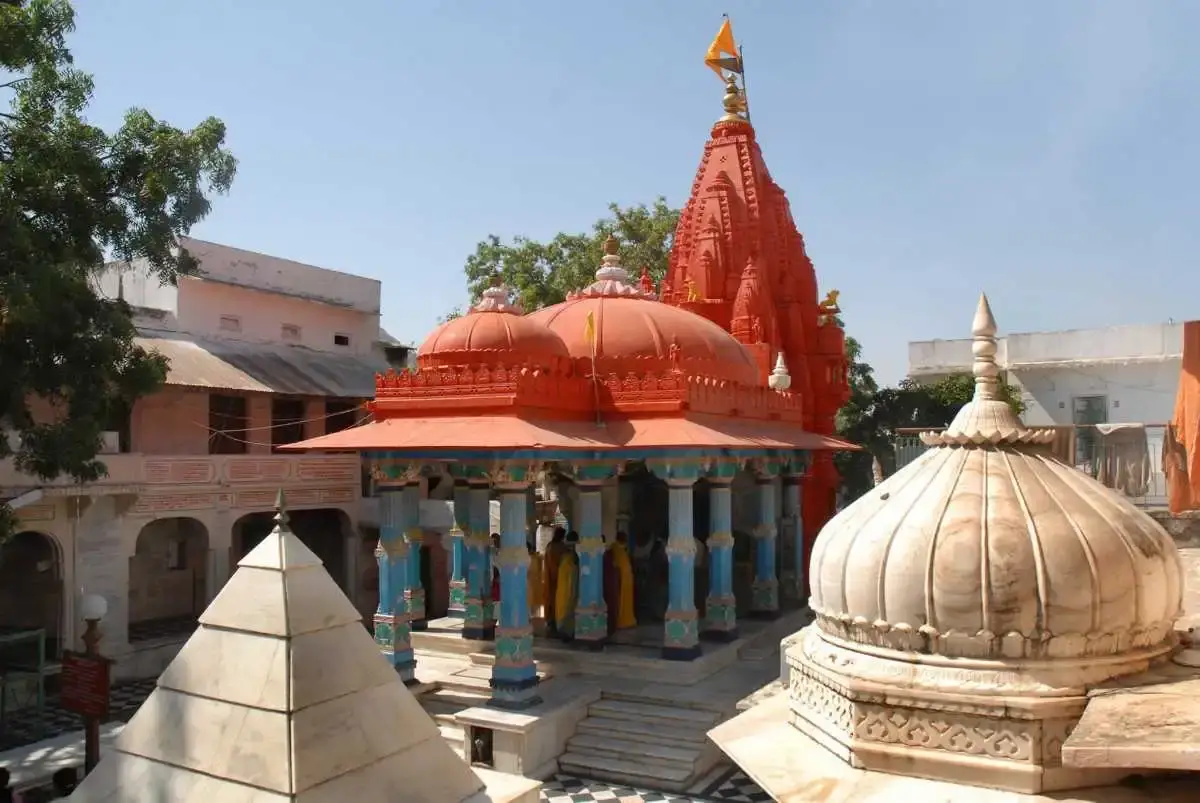
You may have heard of temples of many gods, but one might have hardly heard about temple of Lord Brahma. Among the few temples of Lord Brahma one of the most significant is the Brahma Temple in Pushkar, Rajasthan. This temples as the name suggests is dedicated to Lord Brahma, who have also been referred as the creator god in Hindu mythology.
With layers of ancient legends, historical transformations, and cultural significance, this temple tells a fascinating story about devotion, rivalry, and divine intervention.
The story of the Brahma Temple begins with a divine decision by Brahma himself. Legend has it that Brahma decided to conduct a powerful yajna (sacred ritual) on Earth. To mark the location, he dropped a lotus flower from the heavens, which fell in the area around the present-day Pushkar and created the holy lake. This act, it’s said, marked the beginning of Pushkar as a sacred site.
However, the ritual couldn’t start without a female consort at his side. When Brahma’s wife, Savitri Devi, didn’t arrive in time, Brahma married a local girl, Gayatri Devi, so he could proceed. This led to a confrontation that defined the temple’s significance. When Savitri finally arrived and discovered Brahma’s new marriage, she was furious. She cursed Brahma, decreeing that Pushkar would be the only place in the world where he would be worshipped. This curse is said to be the reason why Brahma temples are extremely rare, making Pushkar’s Brahma Temple a place of great religious significance for Hindu devotees.
While the temple's mythological origins are rooted in ancient times, the physical structure that stands today has seen periods of rebuilding and renovation. The original structure is believed to have been built around the 14th century. The temple is said to have been built by the sage Vishwamitra after Brahma's yagna (ritual). Furthermore, in the 8th century Hindu philosopher Adi Shankara is said to have renovated this temple.
The current temple, however, largely dates back to the 18th century and owes much of its design to Maharaja Jawat Raj of Ratlam, who funded its renovation. Pushkar, known for its spiritual atmosphere, drew royal attention over the centuries, and Maharaja Jawat Raj’s efforts in the 1700s helped ensure that the temple maintained its central place in the town’s religious landscape. The Brahma Temple speaks of the unforgettable mythological stories of human desires, rivalries, and divine destinies.
The shrine has the main idol of Brahma, seated in a cross-legged position, symbolizing meditation and control over creation. Gayatri's image sits along with Brahma's in centre to his left. Sarasvati sits to the right of Brahma, along with other deities of the Hindu pantheon. Images of the peacock, Sarasvati's mount, also decorate the temple walls. Images of the preserver-god Vishnu, life-sized dvarapalas (gate-keepers) and a gilded Garuda (eagle-man, mount of Vishnu) are also seen in the temple.
The temple complex also includes other small shrines and is part of the larger religious landscape of Pushkar, filled with ghats and smaller temples surrounding the lake. Together, they form a pilgrimage route that culminates in the Brahma Temple, highlighting its central role.
Each year on Kartik Poornima, the Brahma Temple in Pushkar hosts a festival where thousands of pilgrims bathe in the holy lake and perform rituals to honor Lord Brahma. This event coincides with the renowned Pushkar Camel Fair, adding cultural vibrancy to the religious celebrations.